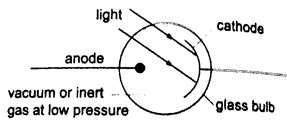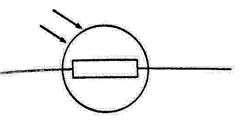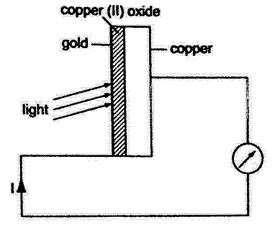Applications of photoelectric effect
1. Photoemissive cell
It consists of a cathode and an anode. When light falls on a photosensitive cathode, electrons are dislodged which are then attracted by the anode. This completes an external circuit and current flows. When a body passes between the cathode and the source of light, the light is cut off and no photoemission takes place.
2. Photovoltaic cells
Light strikes the cell on the gold film side which emits electrons from the copper oxide surface. The copper oxide thus acquires a negative potential and copper a positive potential. A potential difference is therefore created and a current flows through a wire connecting the gold film and the copper externally.
3: Photo-conductive cell
It is also called the light dependent resistor. The resistance of the cell varies with intensity of the light falling on it. In darkness, the resistance of the cell is greatest and least on a bright light.
OR
1. Photo-emissive cells– they are made up of two electrodes enclosed in a glass bulb (evacuated or containing inert gas at low temperature). The cathode is a curved metal plate while the anode is normally a single metal rod)

They are used mostly in controlling lifts (doors) and reproducing the sound track in a film.
2. Photoconductive cells – some semi-conductors such as cadmium sulphide (cds) reduces their resistance when light is shone at them (photo resistors). Other devices such as photodiodes and photo-transistors block current when the intensity of light increases.
Photo-conductive cells are also known as light dependent resistors (LDR) and are used in alarm circuits i.e. fire alarms, and also in cameras as exposure metres.

3. Photo-voltaic cell– this cell generates an e.m.f using light and consists of a copper disc oxidized on one surface and a very thin film of gold is deposited over the exposed surfaces (this thin film allows light). The current increases with light intensity.

They are used in electronic calculators, solar panels etc.
Moraa orina answered the question on
April 12, 2018 at 07:17